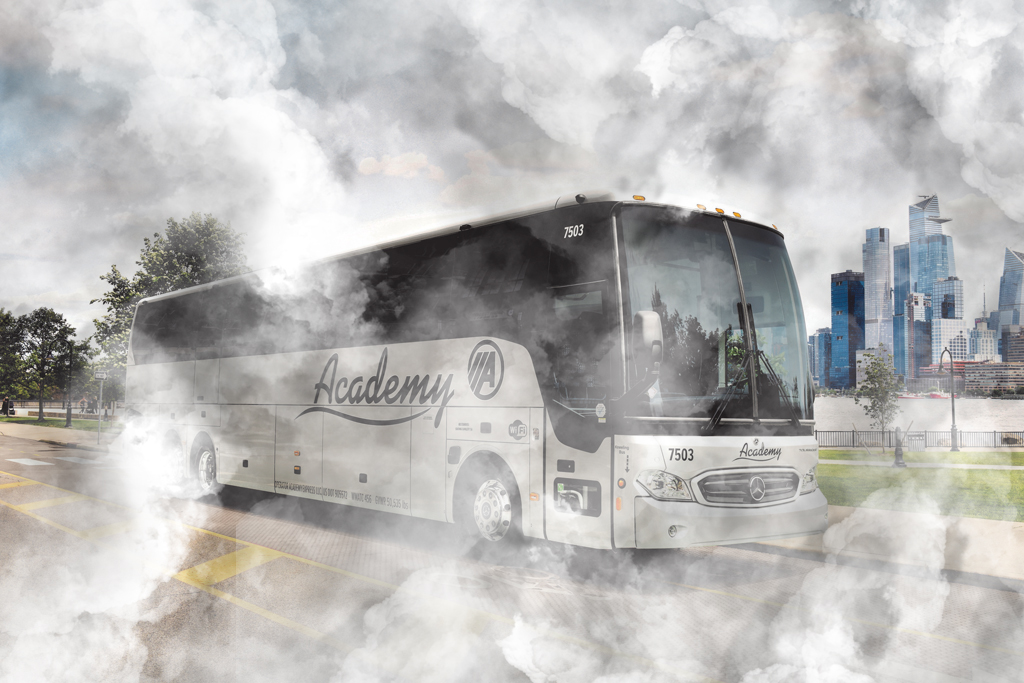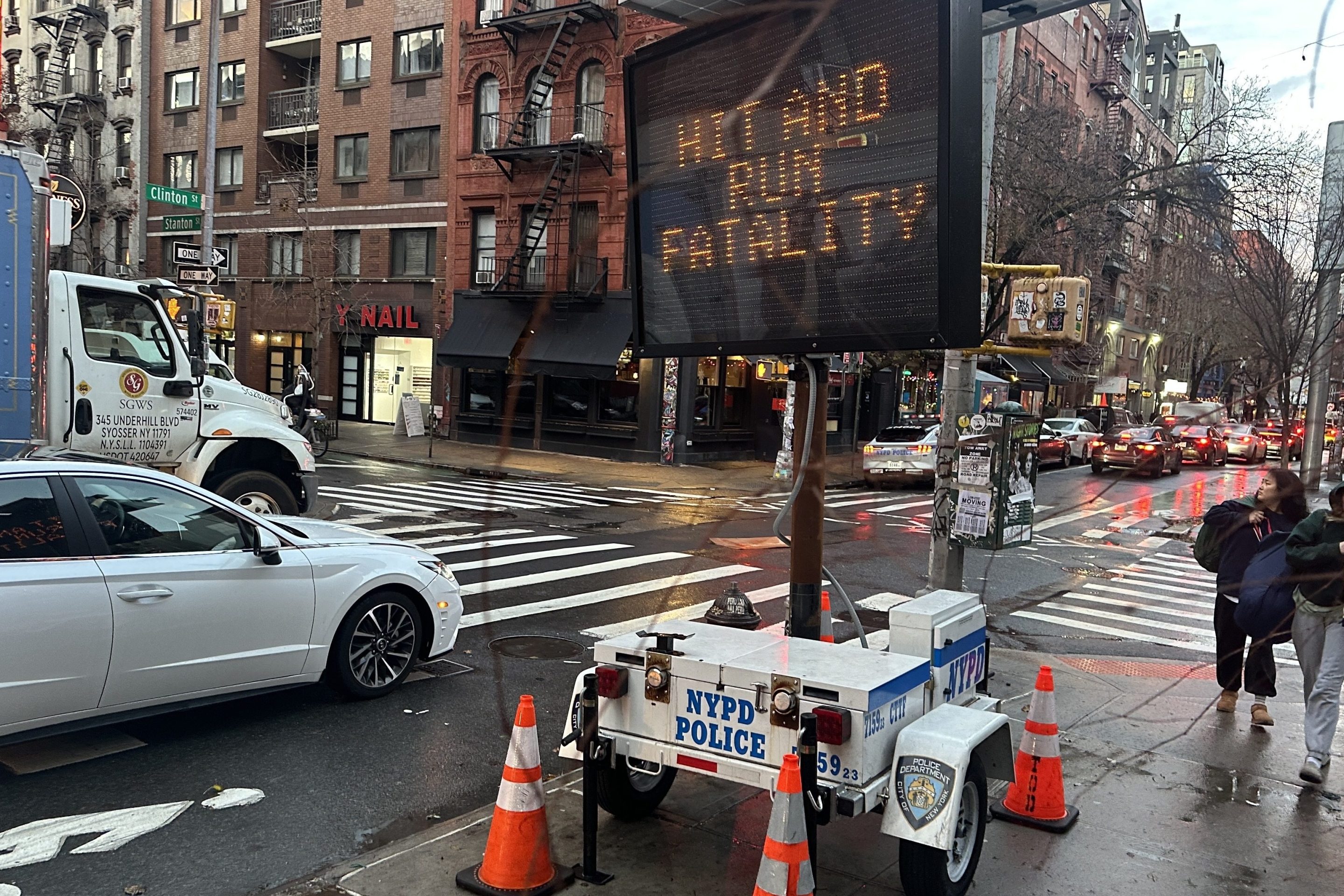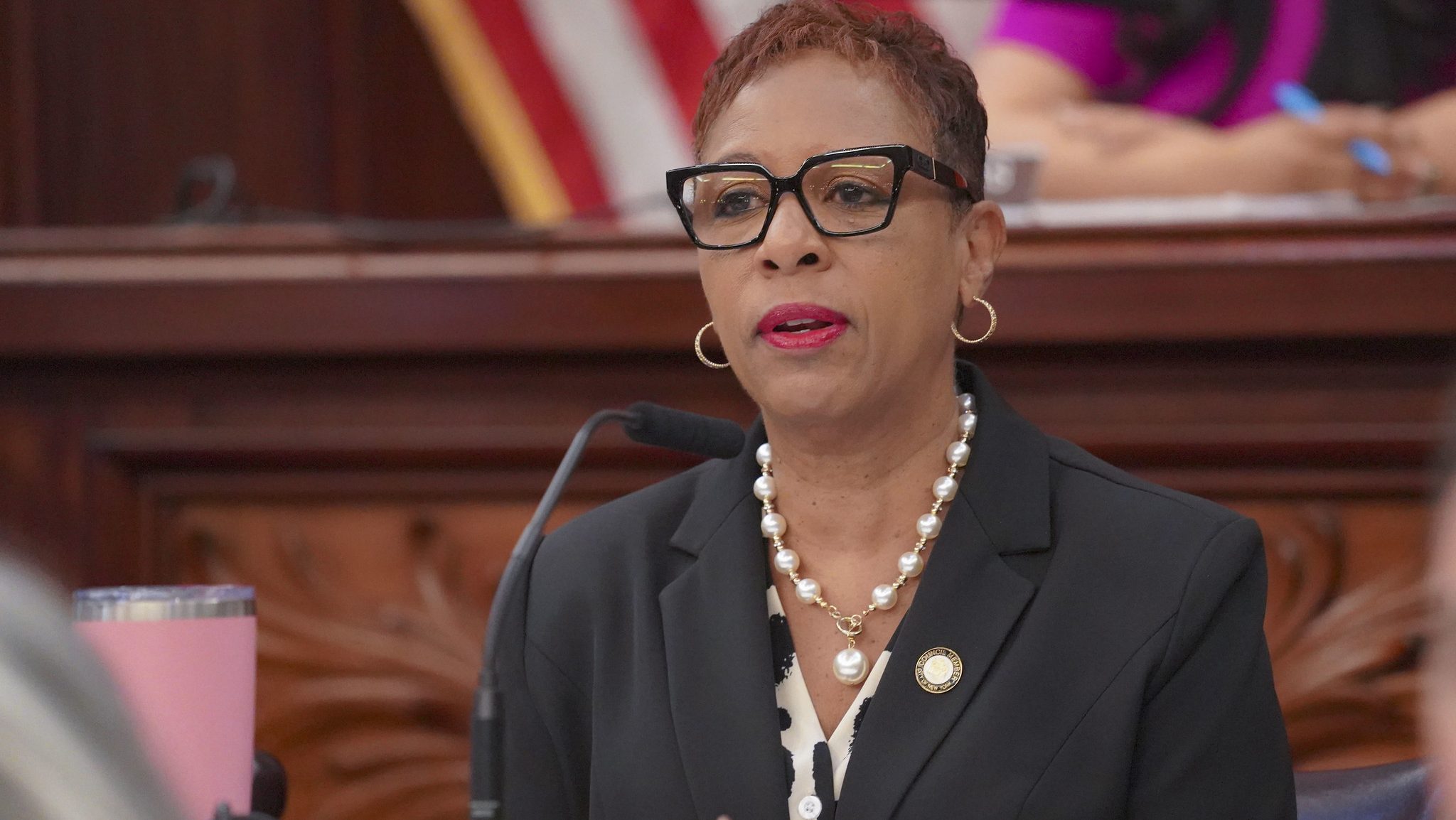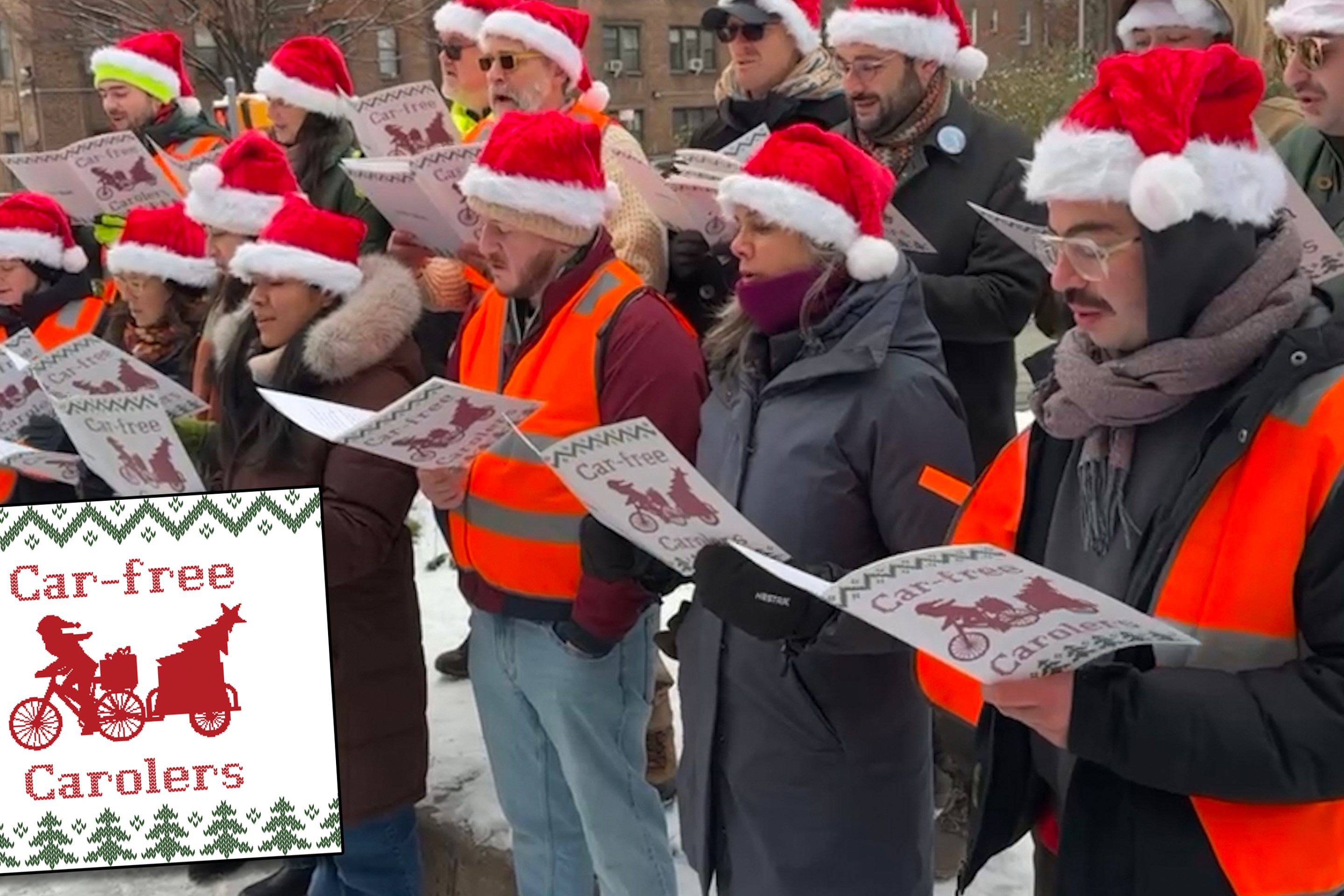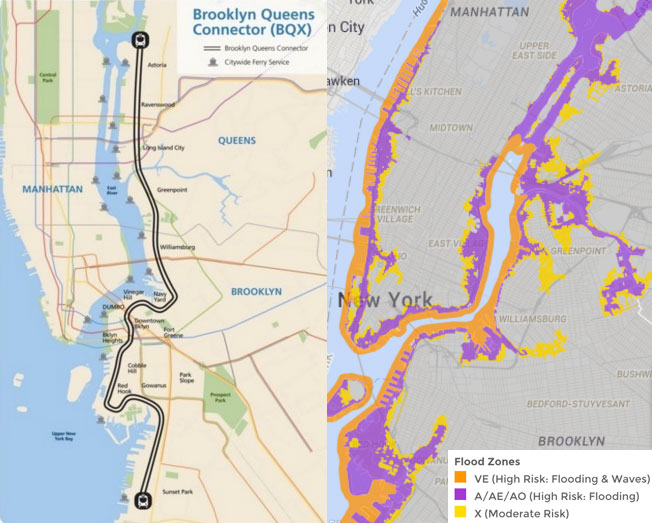
As others have noted, the proposed Brooklyn-Queens streetcar route would run right through city- and FEMA-designated high-risk flood zones. This raises questions about how the streetcar infrastructure and vehicles would be protected from storm surges, as well as the general wisdom of siting a project that's supposed to spur development in a flood-prone area.
Yesterday, reporters at City Hall's streetcar press conference asked how the city would plan for future flood events along the streetcar route. Neither de Blasio nor the city officials at his side could explain how the streetcar plan would specifically address flooding -- no details were given about where the vehicles would be stored or how the power supply would be shielded. Instead, the mayor started out by taking a very wide view of the situation.
"This city is deeply committed to the goal of reducing emissions by 80 percent by the year 2050," the mayor said. "This is one of the ways we do it -- get more and more people onto mass transit. Get them out of their cars. Use transportation that does not create harmful emissions. That’s why the BQX is such a powerful idea in terms of the environment to begin with."
De Blasio then argued that the city's flood resiliency efforts, which includes some measures to fortify areas like Red Hook against future storms will ensure that waterfront neighborhoods are sufficiently protected. "We’re going to be in a very different situation than we were a few years ago when Sandy hit,” he said.
The mayor said the streetcar would prove more flood-proof that the subway system:
Now I think the MTA has been doing very important work to add resiliency to the subways but, in fact, surface transportation will come back online a lot quicker than subways under many situations, so having a light rail system gives us something that we think will be there despite whatever happens with the flooding, even if sometimes the subways are compromised.
Fielding a separate question about how the streetcar will be powered, Transportation Commissioner Polly Trottenberg did say it won't have overhead wires "for the most part," but will instead be "self-propelled" with batteries.
Beyond the streetcar infrastructure itself, the larger question is whether New York should increase its exposure to catastrophic storms by promoting development in areas in danger of flooding. Trottenberg said the streetcar would lead to "a huge growth in development and density."
It's debatable whether the project will actually spur development, but why, after Sandy, would the city want to purposefully concentrate growth in some of its most flood-threatened neighborhoods?
